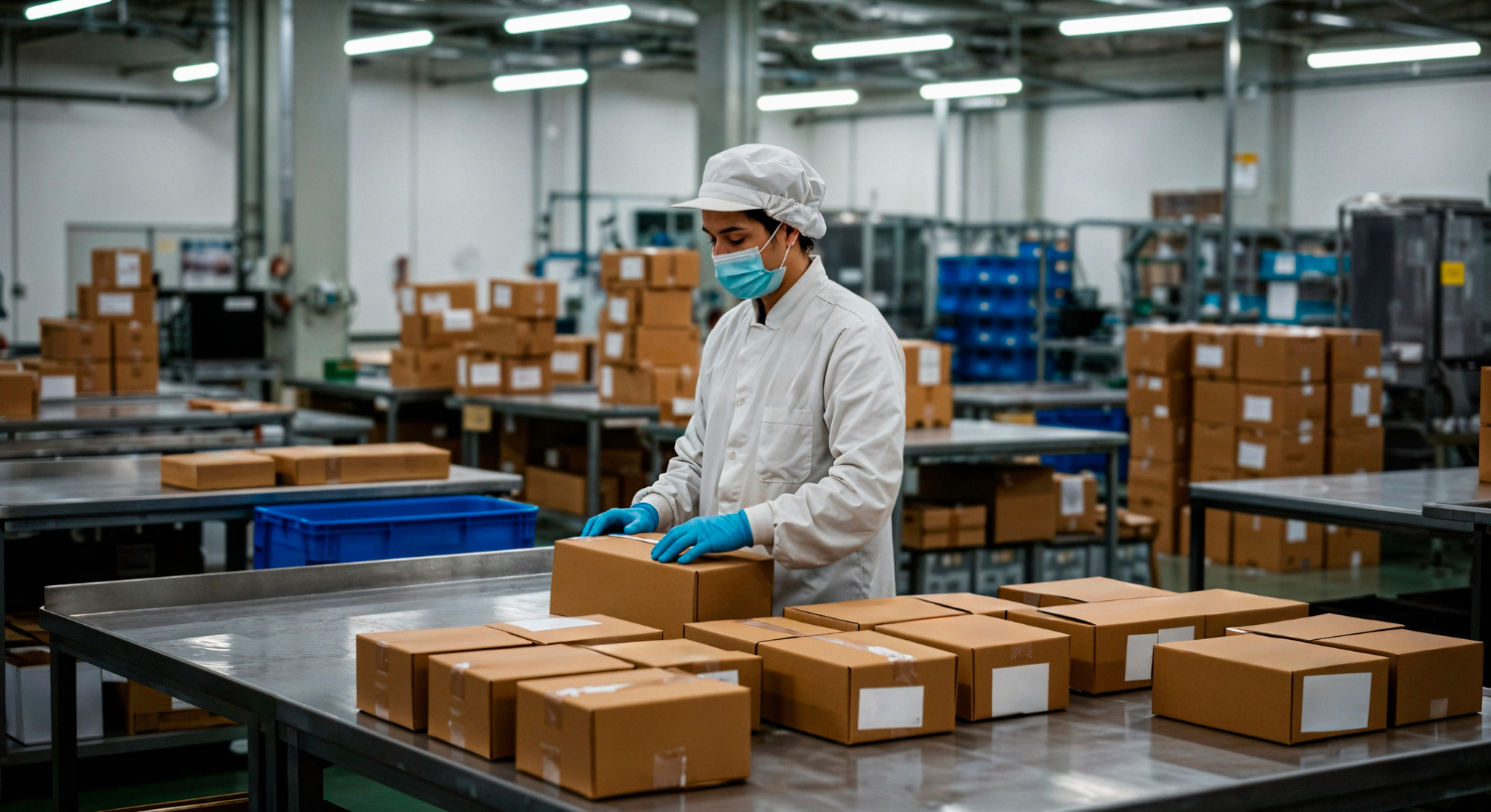Your Guide to ISO 13485 Training: Why It’s a Game-Changer for Sterilization and Packaging Services

Picture this: you’re running a sterilization and packaging service, and everything’s humming along—until a client asks about your ISO 13485 compliance. Suddenly, you’re wondering if your team’s processes are up to snuff. Sound familiar? For companies in the medical device world, ISO 13485 isn’t just a fancy certification; it’s the backbone of quality, safety, and trust. And the key to nailing it? Training. Not just any training, but focused, practical ISO 13485 training that equips your team to shine.
In this guide, we’ll walk through why ISO 13485 training matters, what it entails, and how it can transform your sterilization and packaging operations. Whether you’re a seasoned pro or new to the medical device game, this article’s got you covered with insights, tips, and a touch of real-world grit. Let’s get started.
What’s ISO 13485, and Why Should You Care?
ISO 13485 is the gold standard for quality management systems (QMS) in the medical device industry. It’s a set of rules—think of it like a recipe—that ensures your processes consistently produce safe, effective products. For sterilization and packaging services, this standard is non-negotiable. Why? Because your work directly impacts patient safety. One misstep in sterilizing a surgical tool or packaging a device could have serious consequences. Scary, right?
Here’s the thing: ISO 13485 isn’t just about checking boxes. It’s about building a culture of precision and accountability. Training your team on this standard means they’re not just following protocols—they’re living them. From sterilizing equipment to sealing packages, every step aligns with global expectations. And in a competitive field, that’s a huge selling point for clients.
A Quick Tangent: The Human Side of Compliance
I once spoke with a quality manager who said, “ISO 13485 feels like a mountain to climb, but once you’re trained, it’s like having a map.” That stuck with me. Training doesn’t just teach rules; it gives your team confidence to handle audits, client questions, and even unexpected hiccups. It’s like giving them a superpower—only instead of flying, they’re mastering risk management and documentation.
Who Needs ISO 13485 Training?
If your company handles sterilization or packaging for medical devices, the answer is simple: everyone. From the technicians on the floor to the folks in the C-suite, understanding ISO 13485 ensures your operation runs like a well-oiled machine. Here’s a breakdown of who benefits:
- Technicians and Operators: These are your frontline heroes. Training helps them understand why every sterilization cycle or packaging seal matters. They’ll learn to spot risks, like a faulty seal, before it becomes a problem.
- Quality Managers: These folks live and breathe compliance. Training sharpens their ability to design processes that meet ISO 13485 requirements, like maintaining traceability or validating sterilization methods.
- Leadership Teams: Executives need the big picture—how ISO 13485 aligns with business goals, improves client trust, and opens doors to new markets.
- New Hires: Starting with ISO 13485 training sets the tone. It’s like teaching someone to swim before tossing them into the deep end.
Don’t think training is just for the “big players.” Even small sterilization firms or contract packagers benefit. In fact, smaller teams often see the biggest gains because training levels the playing field, letting them compete with industry giants.
What Does ISO 13485 Training Cover?
So, what’s in the training? It’s not just a dry lecture on regulations—think of it as a toolkit for building quality into every step of your process. Here’s what you can expect:
- The Basics of ISO 13485: Trainees learn the standard’s structure, from risk management to process validation. They’ll understand clauses like 7.3 (design and development) or 8.2.6 (monitoring and measurement).
- Risk Management: This is huge for sterilization and packaging. Training covers ISO 14971, the risk management standard, teaching you to identify and mitigate risks—like contamination or packaging failures.
- Documentation and Traceability: Ever lost track of a batch record? ISO 13485 training drills down on keeping airtight records, so you can trace every device from production to patient.
- Audits and Compliance: Training preps your team for internal and external audits. They’ll learn how to handle auditor questions with confidence, not panic.
- Sterilization and Packaging Specifics: For your industry, training dives into validating sterilization processes (like ethylene oxide or gamma radiation) and ensuring packaging maintains sterility until the point of use.
A Real-World Example
Imagine a packaging technician who learns through training that a small crease in a sterile pouch could compromise a device’s safety. That one insight could prevent a costly recall—or worse, a patient harm incident. Training turns “good enough” into “bulletproof.”
Why Training Isn’t Just a Checkbox
You might be thinking, “Can’t we just read the standard and call it a day?” Sure, you could—but that’s like trying to learn surgery from a textbook. ISO 13485 training brings the standard to life. It’s hands-on, practical, and tailored to your role. Here’s why it’s worth the investment:
- Boosts Team Confidence: When your team knows the ins and outs of ISO 13485, they work with purpose, not fear. They’re not guessing—they’re executing.
- Reduces Errors: Trained employees catch issues early, whether it’s a sterilization parameter out of whack or a packaging defect. Fewer errors mean fewer headaches.
- Impresses Clients: Clients love working with certified, well-trained teams. It’s a signal you’re serious about quality, which can tip the scales in your favor during contract negotiations.
- Prepares for Audits: Audits are nerve-wracking, but trained teams know what to expect. They’ll have documentation ready and answers polished, making audits a breeze.
A Seasonal Note
As we head into 2025, regulatory scrutiny is only getting tighter. With new EU Medical Device Regulation (MDR) deadlines looming, ISO 13485 training isn’t just a nice-to-have—it’s a survival tool. Think of it as winterizing your house before a storm. You don’t wait until the snow’s falling to seal the windows, right?
Choosing the Right Training Program
Not all ISO 13485 training is created equal. You’ve got options—online courses, in-person workshops, or even tailored in-house sessions. Here’s how to pick the right one for your sterilization and packaging team:
- Look for Accreditation: Choose programs from reputable providers like BSI, TÜV SÜD, or Intertek. These organizations know the standard inside out.
- Check for Role-Specific Content: A technician doesn’t need the same training as a quality manager. Look for courses tailored to your team’s roles.
- Prioritize Practicality: The best programs include case studies, role-playing, or mock audits. For example, a course might simulate a packaging validation failure and walk you through fixing it.
- Consider Flexibility: Online courses, like those from Udemy or Coursera, let your team learn at their own pace. In-person sessions, though, offer hands-on interaction that’s hard to beat.
- Ask About Updates: ISO 13485 was last updated in 2016, but regulations evolve. Ensure the training covers the latest requirements, like MDR or FDA alignment.
A Quick Tip
If you’re budget-conscious, start with online courses for foundational knowledge, then invest in in-person workshops for key staff. It’s like building a house—lay the foundation first, then add the fancy fixtures.
Overcoming Common Training Challenges
Let’s be real: training isn’t always smooth sailing. Between busy schedules and tight budgets, it’s easy to push it to the back burner. Here are some common hurdles and how to tackle them:
- Time Constraints: Your team’s swamped with sterilization runs and packaging deadlines. Solution? Break training into bite-sized modules—30 minutes a day instead of a full-day seminar.
- Cost Concerns: Training isn’t cheap, especially for small firms. Look for group discounts or government grants for compliance training. Some providers even offer free introductory webinars.
- Resistance to Change: Some employees might grumble about “another training.” Make it engaging—use real-world examples, like a failed audit horror story, to show why it matters.
- Keeping It Relevant: Generic training can feel like a snooze-fest. Choose programs that focus on sterilization and packaging challenges, like validating gamma sterilization or ensuring pouch integrity.
The Ripple Effect of Training
Here’s where it gets exciting. ISO 13485 training doesn’t just improve compliance—it transforms your business. Your team becomes more efficient, your processes more reliable, and your reputation stronger. Clients notice when your sterilization records are flawless or your packaging passes every inspection. It’s like planting a seed that grows into a thriving tree.
And there’s a personal side to this. When your team feels confident in their skills, they take pride in their work. That technician who used to dread audits? Now they’re the one leading the charge, showing auditors your pristine documentation. That’s the kind of culture ISO 13485 training builds.
A Digression: The Bigger Picture
Training also opens doors to new opportunities. Maybe you’re eyeing international markets or want to work with bigger medical device manufacturers. ISO 13485 certification, backed by a trained team, is your ticket to those conversations. It’s like having a passport to the global medical device industry.
How to Get Started
Ready to take the plunge? Here’s a step-by-step plan to kick off your ISO 13485 training:
- Assess Your Needs: Identify which team members need training and what level (beginner, intermediate, or advanced).
- Set a Budget: Factor in costs for courses, travel (if in-person), and time away from work.
- Choose a Provider: Research accredited providers and pick one that aligns with your team’s needs.
- Schedule Training: Plan sessions during slower periods to minimize disruptions.
- Follow Up: After training, hold team discussions to reinforce learning. Maybe even schedule a mock audit to test their skills.
A Word of Encouragement
Starting ISO 13485 training can feel daunting, but it’s worth it. Think of it like learning to ride a bike—wobbly at first, but soon you’re cruising. Your team will thank you, your clients will trust you, and your business will thrive.
Wrapping It Up: Why ISO 13485 Training Is Your Next Big Move
If you’re in sterilization and packaging, ISO 13485 training isn’t just a requirement—it’s a game-changer. It equips your team to deliver quality, builds client confidence, and sets you up for long-term success. Sure, it takes time and effort, but the payoff is huge. Who wouldn’t want a team that’s confident, compliant, and ready to tackle any challenge?
So, what’s your next step? Talk to your team, explore training options, and take that first step toward ISO 13485 mastery. Your future self—and your clients—will thank you.

